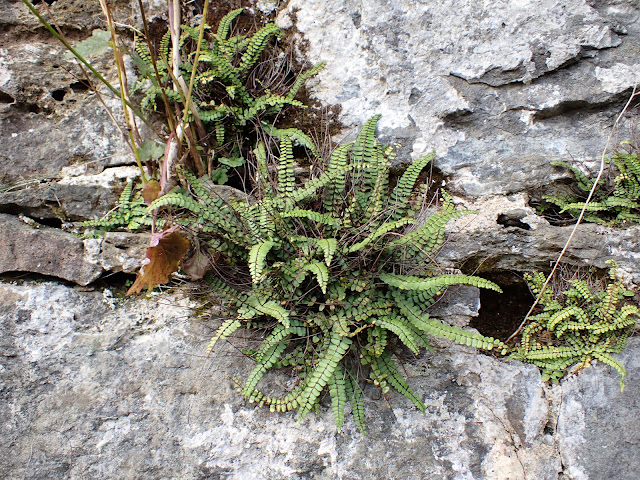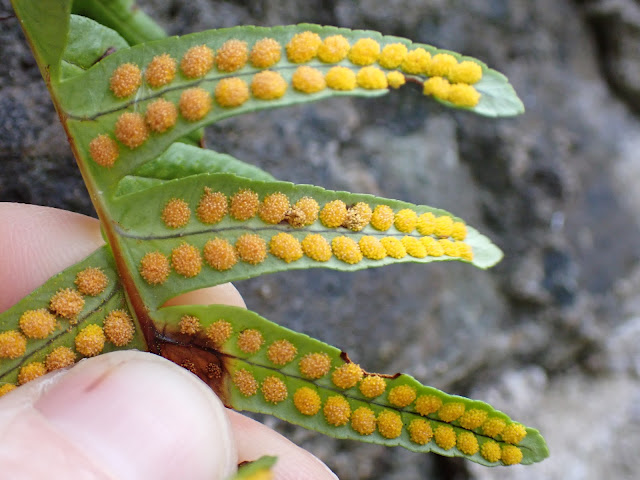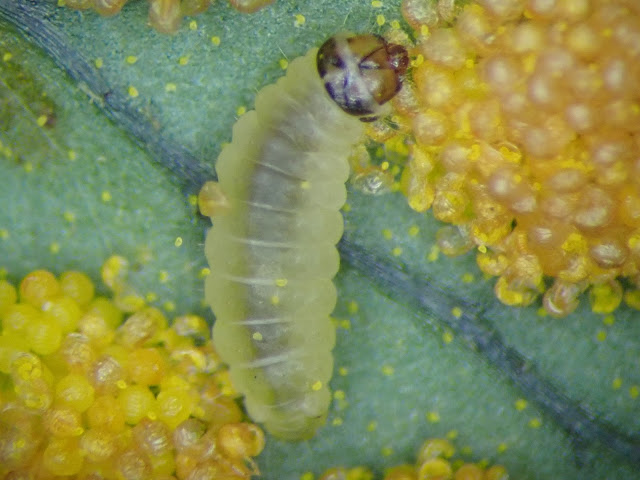I awoke rather refreshed, it seems I'm finally getting used to sleeping in my latest car. It's definitely not as comfy as the old one, maybe I should test the next one for sleepworthiness before purchasing.
I had gen for Creeping Dogwood at its sole Scottish site, Pitgaveney Wood just outside of Elgin. In fact, the layby I had slept in was on the edge of those very woods. I figured this wouldn't take much time, tick the Creeping Dogwood and then spend a bit of time searching for self-sown Norway Spruce, this being a bit of a massive omission on my plant list. I've certainly seen Norway Spruce before, indeed I've collected the cones in a failed attempt to breed out Cydia strobilella, a small species of moth (I did manage to breed out some pretty funky snakeflies though!) But I have never noted it as being fully naturalised and hence tickable. Today I would remedy that omission.
I followed a small track into the woods, noting at least six or seven dilapidated 'camps' in amongst the deep cover. Mostly old tents and tarps, but one pretty decent affair consisting of cut logs and branches leaning against a fallen tree, complete with a nice cleared patch for a firepit. Lots of discarded beer cans and the odd glass bottle too. Oh well, it is near a built up area I guess...
Anyway, I criss-crossed the area for some while. I double-checked my gen. I double-checked my position. Hmmm, I should be right on top of the reported "good sized patch" and "lots in woodland" but I was buggered if I could see anything. I did some more criss-crossing through the undergrowth, which mostly consisted of low conifer branches and not a lot else. Surely a "good sized patch" of evergreen leaves shouldn't be this difficult to locate? And then, quite suddenly, in an area I'd surely walked around and across several times, I found it.
 |
| A-ha! |
Ok, so it was a somewhat smaller and sparser "good sized patch" than I was anticipating but, after a mere thirty minutes or so stumbling around a few hundred square metres of woodland floor, here I was looking at my first ever Creeping Dogwood Cornus canadensis. Huzzah, that's number 6838 on my PSL! I had a closer look and took a few more pics.
 |
| Creeping Dogwood in all of its vegetative glory. The flowers are pretty spectacular, I may have to return! |
Pleased to have finally found the plants, the grid ref is NJ23396463 by the way, a mere 200ft from where I'd parked up, I turned my attention to the various conifer species growing and self-sowing throughout the woodland. The cones of Norway Spruce are pretty damn obvious, each being 15-20cm long and looking like a fat Cuban cigar. Sitka Spruce, also present in these woods, has similar cones but they only ever attain a maximum length of about 10cm and, bulkwise, are tiny in comparison. I wouldn't be too upset if a Sitka cone fell and hit me on the head, but I suspect a falling cone of Norway Spruce would definitely result in a small ouch! of surprise.
 |
| Western Hemlock-spruce Tsuga heterophylla |
Western Hemlock-spruce was by far and away the commonest self-sown alien conifer in the woods. Note the needles are of two lengths, those on the upper half of the midrib are shorter than those on the lower half. Two sizes of leaf, hence heterophylla. But this was not what I was after, I continued onwards.
 |
| Western Red-cedar Thuja plicata |
There were quite a few Western Red-cedar Thuja plicata scattered through the woodland understorey too. The underside of the branchlets show "white butterfly" markings, which helps to separate this species from various others. But again, not what I was looking for this time. I moved on once more.
 |
| Tremella mesenterica growing on an old Gorse stem |
 |
| I think this is probably gone over Lily-of-the-Valley Convallaria majalis |
It's been many years since I last saw Lily-of-the-Valley, so I'd like to revisit these gone over plants next summer, just to confirm they are what I think they are. There's probably a microfungus on them that would be new for me, annoyingly I didn't consider that at the time. Hopefully they'll be in flower at the same time as the nearby Creeping Dogwood, sometime around late spring should be about right I think.
 |
| This is Sitka Spruce, a tree I'm all too familiar with seeing |
Sitka Spruce Picea sitchensis is a complete and utter thug. It is extremely invasive and, as far as I'm aware, is not on anybody's radar as being one of the largest threats to biodiversity in Scotland. I think I'd put it ahead of Rhododendron ponticum for the impact it will have on the landscape in about twenty years time, maybe less. Biological control is required, which obviously won't be popular with the timber industry, but I just don't know what else could slow and tame the spread of this beast. Anyway, the cones are far too small and the needles far too bluish and spiky for Norway Spruce. I moved onwards once more.
 |
| Douglas Fir Pseudotsuga menziesii |
There was one area that had a lot of Douglas Fir Pseudotsuga menziesii planted, though it wasn't self-seeding that I could see. The needles are distributed around the entire twig and are soft to the touch. The cones are dead easy to recognise, it looks as though the back end of a mouse is hanging out from each scale! But again, not the tree I wanted to find today. I continued onwards.
 |
| Can you see it? |
 |
| Full zoom on my phone! |
This Red Squirrel scampered across my path and up a tree where it patiently waited for me to unlimber my phone from my pocket, point and shoot. It then scurried higher into the canopy and scolded me for no good reason. I'm not sure I've ever heard a Red Squirrel make a noise before, it was much less harsh than the noise a Grey Squirrel makes. But why aren't you using a proper camera? I hear you cry. Well because I broke it, that's why. Happily the replacement is arriving within the next day or so, hopefully the images will be a lot better from the next blogpost onwards....
 |
| Is this a Western or Eastern Hemlock-spruce??? |
I'm really not sure what this is, I need to go back armed with some literature and key it properly. If it is Eastern Hemlock-spruce, which I think it could well be, it will be new for me and new for the area too. Hmmm, yep I definitely need to come back in the summer!
 |
| I'm always pleased to find Stag's-horn Clubmoss Lycopodium clavatum |
 |
| Doesn't matter how old or how young the tree, the persistent paired cones are a feature of Lodgepole Pine |
 |
| And this is how more Lodgepole Pines are made... |
Lodgepole Pine Pinus contorta was growing plentifully in the more open areas, self-seeding en masse alongside the native Scots Pine Pinus sylvestris which was also self-seeding en masse. I didn't think to take any pics of Scots Pine, which was a pity. What did catch my eye were the numerous Juniper Juniperus communis bushes growing in a very upright fashion, in stark contrast to yesterday's Junipers growing on exposed rocks at Invernaver.
 |
| Young Juniper bush in open birch woodland edge |
Sadly for me, Juniper was the last conifer noted that day, apart from many planted larches which I didn't examine closely enough to get to species. So, Norway Spruce has eluded me once more. Damn. It's not uncommonly planted in forestry plots, and it's well-known for self-seeding where it does occur, so I feel relatively confident it will soon fall for me. I hope so anyway, if I can't find a common tree there's little hope for me as an amateur botanist.




















.png)






.png)













































.png)

.png)